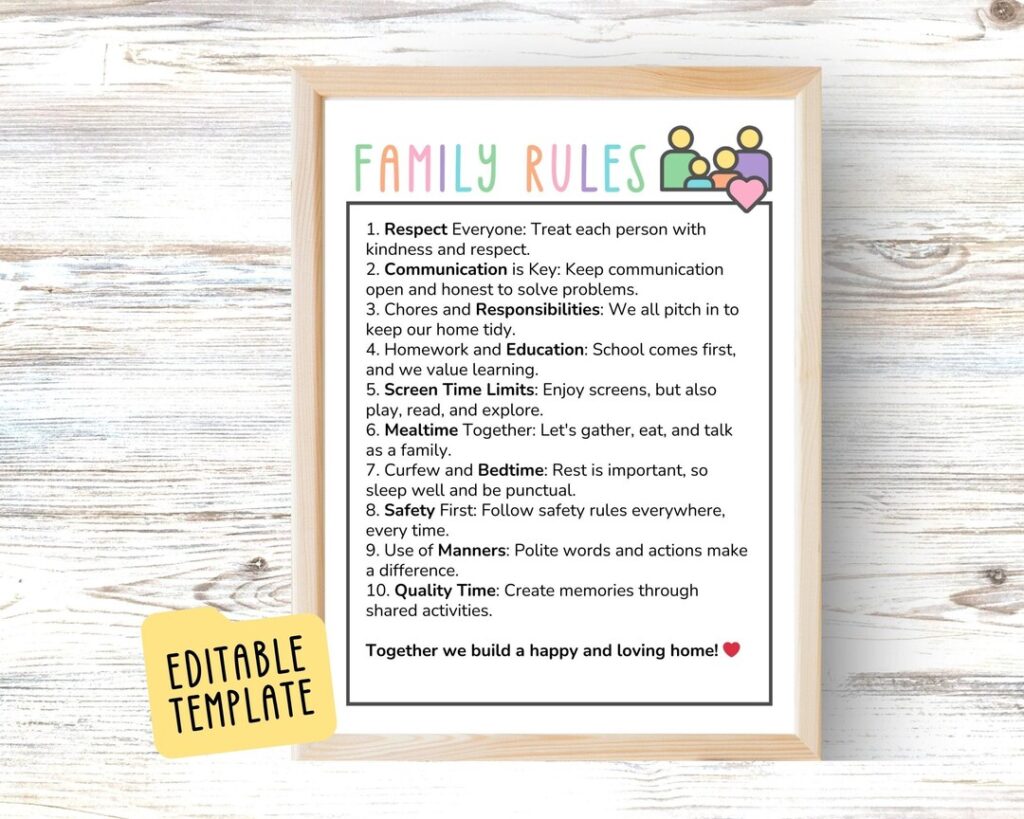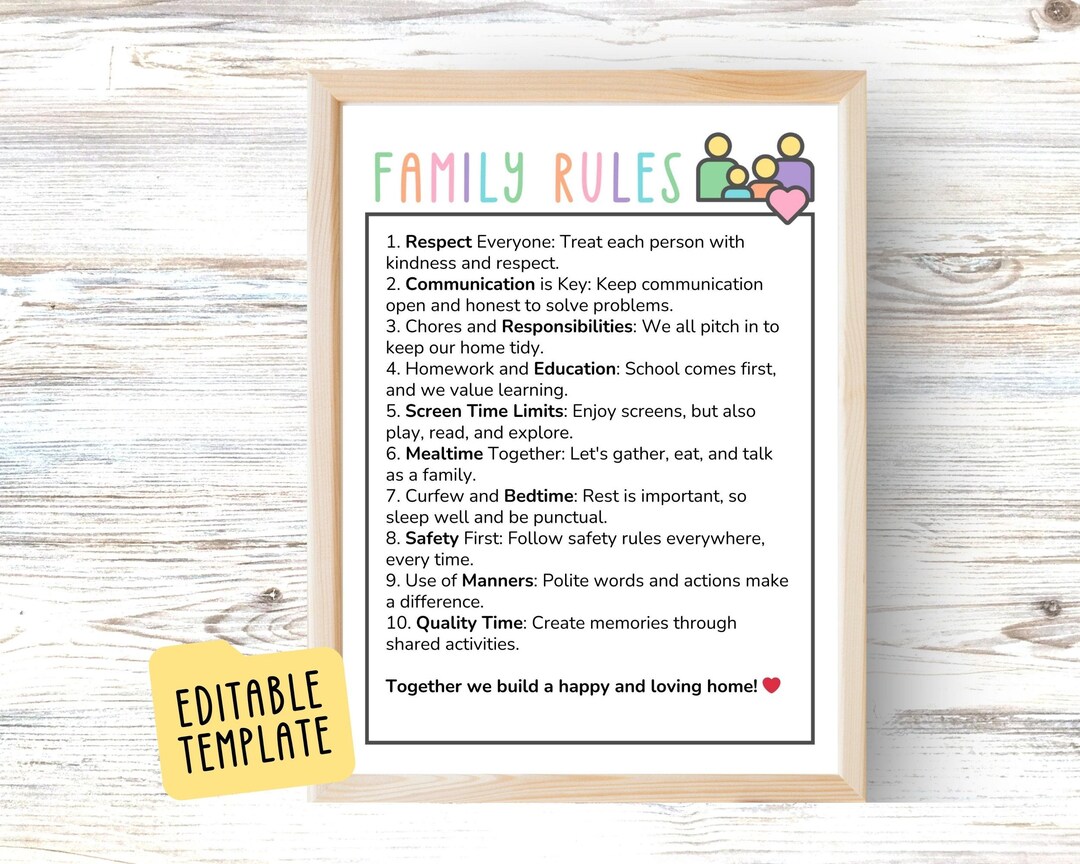
Navigating the Home: Examples of Effective Household Rules
Household rules are the unsung heroes of a harmonious home. They provide structure, promote responsibility, and minimize conflict. But what exactly constitutes a good household rule, and how can you implement them effectively? This article delves into various example of household rules, exploring their benefits, implementation strategies, and adaptations for different family dynamics. Think of them as the operating system for your family life, ensuring everyone is on the same page.
The Importance of Establishing Household Rules
Before diving into specific examples, it’s crucial to understand why household rules are so important. They aren’t about stifling individuality or creating a rigid environment. Instead, they serve several key functions:
- Creating a Sense of Security: Predictability reduces anxiety, especially for children. Knowing what’s expected provides a feeling of safety and control.
- Promoting Responsibility: Rules often involve chores or tasks, teaching valuable life skills and a sense of contribution to the family unit.
- Minimizing Conflict: Clear guidelines reduce arguments and misunderstandings about everything from screen time to shared resources.
- Fostering Respect: Rules can emphasize respect for others’ belongings, privacy, and personal space.
- Building Character: Adhering to rules instills discipline, self-control, and a sense of fairness.
Examples of Household Rules: A Comprehensive Guide
The following are examples of household rules categorized by area of focus. Remember that the best rules are tailored to your family’s specific needs and values.
Cleanliness and Organization
These rules aim to maintain a tidy and organized living space:
- “Clean up after yourself immediately.” This prevents messes from accumulating and becoming overwhelming.
- “Dishes must be washed and put away after each meal.” A classic rule that prevents a sink full of dirty dishes.
- “Make your bed every morning.” A simple task that starts the day with a sense of accomplishment.
- “Toys and belongings must be put away before bedtime.” Keeps the house tidy and prevents tripping hazards.
- “Take out the trash and recycling on designated days.” Assigning specific roles ensures these tasks are completed.
Technology and Screen Time
In the digital age, these rules are essential for managing screen time and promoting healthy habits:
- “No screens at the dinner table.” Encourages family conversation and mindful eating.
- “Screen time is limited to [X] hours per day.” Sets a clear limit on daily screen usage.
- “No screens in bedrooms after [time].” Promotes better sleep hygiene.
- “Appropriate online behavior is expected at all times.” Emphasizes online safety and respect.
- “All devices must be charged in a designated area overnight.” Prevents late-night phone use and ensures devices are ready for the day.
Respect and Communication
These rules foster a positive and supportive family environment:
- “Speak respectfully to all family members.” Emphasizes kindness and consideration in communication.
- “Listen actively when others are speaking.” Promotes understanding and empathy.
- “No interrupting when someone is talking.” Reinforces the importance of respectful communication.
- “Ask before borrowing someone else’s belongings.” Respects personal property and boundaries.
- “Say ‘please’ and ‘thank you’.” Encourages politeness and gratitude.
Chores and Responsibilities
These rules distribute household tasks and teach responsibility:
- “Each family member is responsible for [specific chore].” Assigning specific tasks ensures everything gets done.
- “Chores must be completed by [day/time].” Sets a deadline for completing assigned tasks.
- “Help with meal preparation and cleanup.” Encourages teamwork and shared responsibility.
- “Take care of pets, including feeding, walking, and cleaning.” Teaches responsibility for animal welfare.
- “Yard work and outdoor maintenance tasks will be divided among family members.” Shared responsibility for maintaining the outdoor space.
Safety and Security
These rules prioritize the safety and well-being of all family members:
- “Lock all doors and windows before leaving the house.” Ensures the security of the home.
- “Never open the door to strangers.” Emphasizes safety precautions when alone.
- “Know emergency contact information.” Provides essential information in case of an emergency.
- “Follow safety guidelines when using appliances and tools.” Prevents accidents and injuries.
- “No sharing personal information online without parental consent.” Protects against online predators and identity theft.
Implementing Household Rules Effectively
Simply creating a list of rules isn’t enough. Effective implementation is key to their success. Here are some tips:
- Involve Everyone in the Process: Discuss the need for rules with all family members and solicit their input. This fosters a sense of ownership and buy-in.
- Keep it Simple: Don’t overwhelm everyone with too many rules. Focus on the most important areas and gradually add more as needed.
- Make them Clear and Concise: Rules should be easy to understand and unambiguous. Avoid vague language or jargon.
- Post the Rules: Display the rules in a visible location, such as on the refrigerator or a family bulletin board.
- Be Consistent: Enforce the rules consistently and fairly. Inconsistency undermines their effectiveness.
- Lead by Example: Parents should model the behavior they expect from their children.
- Offer Positive Reinforcement: Reward compliance with praise, privileges, or small incentives.
- Address Rule-Breaking Appropriately: Consequences for breaking rules should be fair, consistent, and age-appropriate.
- Revisit and Revise: As children grow and family circumstances change, rules may need to be adjusted. Regularly review and revise them as needed.
Adapting Rules for Different Family Dynamics
Household rules should be tailored to the specific needs of each family. Consider the following factors:
- Age of Children: Younger children require simpler rules and more direct supervision, while older children can handle more responsibility and independence.
- Family Size: Larger families may need more structured rules to manage shared resources and responsibilities.
- Work Schedules: Adjust chore assignments and meal schedules to accommodate work commitments.
- Special Needs: Consider any special needs or disabilities within the family and adapt rules accordingly.
- Cultural Values: Incorporate cultural values and traditions into household rules.
The Benefits of Consistent Household Rules
When implemented effectively, examples of household rules can bring about significant positive changes within a family:
- Improved Communication: Clear rules can facilitate open and honest communication about expectations and responsibilities.
- Reduced Stress: Predictability and structure can reduce stress and anxiety for all family members.
- Stronger Family Bonds: Working together to maintain a harmonious home can strengthen family bonds.
- Increased Self-Esteem: Completing chores and adhering to rules can boost self-esteem and a sense of accomplishment.
- Better Preparation for Adulthood: Learning responsibility, discipline, and respect prepares children for success in adulthood.
Conclusion
Establishing and maintaining example of household rules is an ongoing process that requires commitment, communication, and flexibility. By tailoring rules to your family’s specific needs and implementing them consistently, you can create a more harmonious, organized, and supportive home environment. Remember that the goal is not to control but to guide, nurture, and prepare your children for a successful future. It is about creating a shared understanding of expectations and responsibilities, fostering a sense of belonging, and promoting a positive and respectful family dynamic. So, take the time to assess your family’s needs, discuss potential rules, and create a framework that works for everyone. The benefits of a well-structured and effectively implemented set of household rules are well worth the effort.
[See also: Creating a Positive Home Environment]
[See also: Effective Communication Strategies for Families]
[See also: Teaching Children Responsibility]

